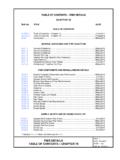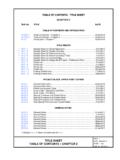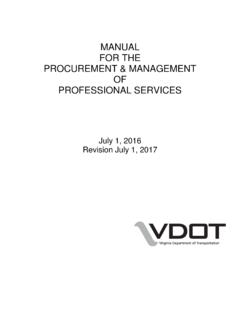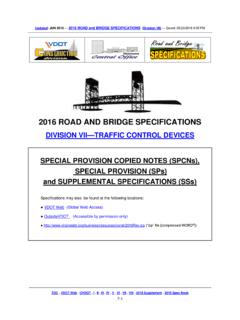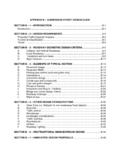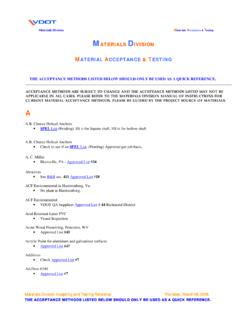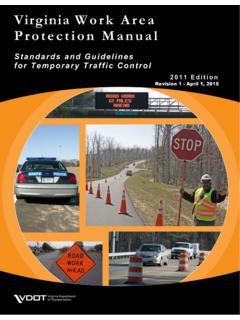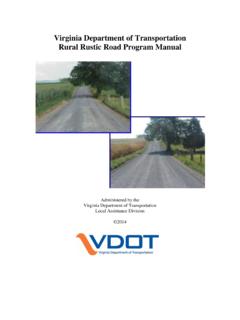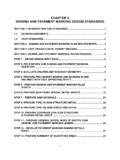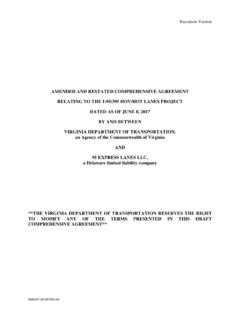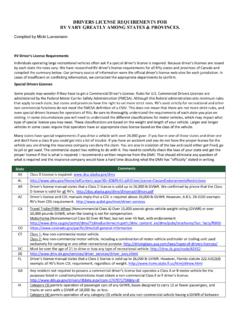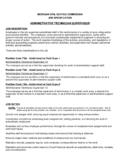Transcription of Roundabout Design Standards
1 Roundabout Design StandardsA Section of the Traffic Engineering Policy & Design StandardsCity of Colorado Springs Transportation EngineeringOctober 4th, 20052 IndexA. Introduction to Design Guide3B. General Design Standards1. Appropriate Roadways / Locations32. Approach & Circulatory Speeds3-43. Design Vehicle4-54. Pedestrian / Bicycles 55. Design Software56. Utilities5-67. Landscaping68. Other6C. Specific / Geometric Design Elements1. Approach Roadway7 Figure I Terminology8 Figure II Fastest Path Multilane9 Figure II-A Fastest Path Single Lane10 Figure III Sight Distance11 Figure IV Typical Signs12 Figure IV-A Signs & Markings Multilane13 Figure IV-B Signs & Markings Single Lane14 Figure V Construction Details15 Figure VI Bicycle Details162.
2 Circulating Roadway173. Sight Distance174. Splitter Island17-185. Central Island186. Signing & Marking18-207. Landscaping20D. Definitions21-223A. Introduction to Design GuideRoundabouts are a safe and efficient form of traffic control, which can be used at many of the same locations astraffic signals or stop controls. Based on US and international studies, roundabouts reduce accidents for motorvehicles and pedestrians, and, due to the slower speeds and the reduced angles, the severity of accidents is less,with fewer injuries. Because of the advantages of roundabouts, it is the policy of the City to use roundabouts asa substitute for other types of intersection control, including intersections with no control, 2-way or all-waySTOP.
3 They should be used instead of a traffic signal at all locations where a Roundabout is shown to operate aswell or better than a signal wherever the Roundabout can be constructed to meet these Standards . Roundaboutsare allowed on local streets, minor and major collectors, minor and principal arterials, but are limited to no morethan two approach included herein will be used, along with engineering judgement and information from other sources,for the Design of all roundabouts within the City of Colorado Springs, and for the review of designs by city staffand private consultants.
4 Where conflicting Standards exist, this Design guide shall designing roundabouts, there are several characteristics that can be standardized, such as signing andmarking; while others must be adapted within the Design Standards to fit the demands of the location, such asapproach angles and right of way restrictions. This Design guide has been created to allow engineers theflexibility to Design a Roundabout to fit a particular site, while still maintaining consistency with otherroundabouts citywide to enhance driver Roundabout designs will require a two step process.
5 A preliminary Design initially submitted that meetsdesign criteria listed under both general Design criteria and specific / geometric Design elements as noted, andupon approval of the overall preliminary Design , a final Design showing all construction details and any phasedconstruction signing & General Design Criteria1. Appropriate Roadways / LocationsRoundabouts should be used where physical conditions such as approach grades and adequate right of wayallow. They are limited to use on a roadway with four or fewer through lanes resulting in no more than twoapproach lanes.
6 They are not appropriate when the capacity requires more than two circulating are also not appropriate if the use of a Roundabout is expected to produce greater vehicle delay orincreased difficulty for of the approach road and Roundabout must provide adequate visibility of the Roundabout from a distancethat will allow approaching drivers to see the Roundabout , both daytime and nighttime. This decision sightdistance (DSD) is the minimum distance required that which will allow deceleration from the 85% travel speed(or posted speed limit, whichever is greater) to the maximum entry speed of 20 MPH (single lane) or 25 MPH(multilane) without exceeding a deceleration rate of 10 /s/s.
7 This is generally the same distance as the intersection sight distance noted in AASHTO Standards , variable by approach Approach & Circulatory SpeedsThe centerlines of the approaching roadways should generally meet near the center of the Roundabout , withsome offset allowed as long as the fastest path criteria are met. However, roundabouts offset significantly from4this criteria will create a difficult Design , with the fastest path requiring artificial restrictions or difficult totraverse approaches. This can result in vehicles crossing lanes and/or failing to follow the lane lines on theapproach or exit.
8 Roundabouts may have three, four or five approaches. Approach roadways may be singlelane, single lane with a flare out to provide an added lane at the circulating roadway (used to provide a left-onlylane), single lane with a by-pass right turn lane, or two lanes without added lane. The configuration is based onthe turning movement approach roadway section includes the roadway from the point where traffic is traveling at the speed limitto the yield point where the entering vehicles enter the inscribed circle (see figure I for explanation of theroundabout elements).
9 This section extends to the limits of the decision sight distance (Exhibit 3-3, Section 3 AASHTO Geometric Design of Highways & Streets, 2001, avoidance maneuver B Stop on urban roadway).The central island shall be visible from the intersection decision sight distance both day and night without theinstallation of any lighting that would distract or shine directly at any vehicle operators. The minimum distancevaries with the roadway classification, but generally is the same as approaching any other intersection listed inthe intersection Standards .
10 The distance where the driver should be able to tell they are approaching aroundabout ranges from 450 prior to the yield point for a local roadway to 750 for a higher speed speeds calculated at 50 and 150 prior to the yield point or entrance to the circulating roadway arecritical to the safe operation of the Roundabout . The Design should meet the maximum desirable approach speedof 20 MPH (single lane) or 25 MPH (multilane) at 50 , and 5 MPH faster than entry speed at the 150 operating speed maximums are controlled by the fastest path as noted in Figure II, which are the radiimeasured along the vehicle path, not along the curb flowlines.
